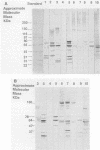Abstract
Dogs orally infected with Neorickettsia helminthoeca developed immunoglobulin G titers against Erlichia risticii, Erlichia sennetsu, and Erlichia canis similar to those against N. helminthoeca antigen, as determined by immunofluorescence. Western immunoblotting showed that the major common antigens shared among the microorganisms were 80- or 78-kDa and 64-kDa polypeptides. In contrast, horse anti-E. risticii and anti-E. sennetsu and dog anti-E. canis sera reacted more weakly to N. helminthoeca antigen than to homologous antigens in both immunofluorescence and Western immunoblotting. Antisera raised in other species of animals, i.e., mouse anti-E. canis and rabbit anti-E. risticii and anti-E. sennetsu sera, however, all reacted with the 64-kDa antigen of N. helminthoeca. This strong antigenic cross-reactivity and similarity in Western immunoblotting reaction profiles indicate that N. helminthoeca is antigenically closely related to E. risticii and E. sennetsu and less so to E. canis. In both immunofluorescence and Western immunoblotting, E. canis shared fewer common antigens with E. risticii and E. sennetsu than N. helminthoeca did. It is reasonable to conclude that these results may have both diagnostic and taxonomic significance.
Full text
PDF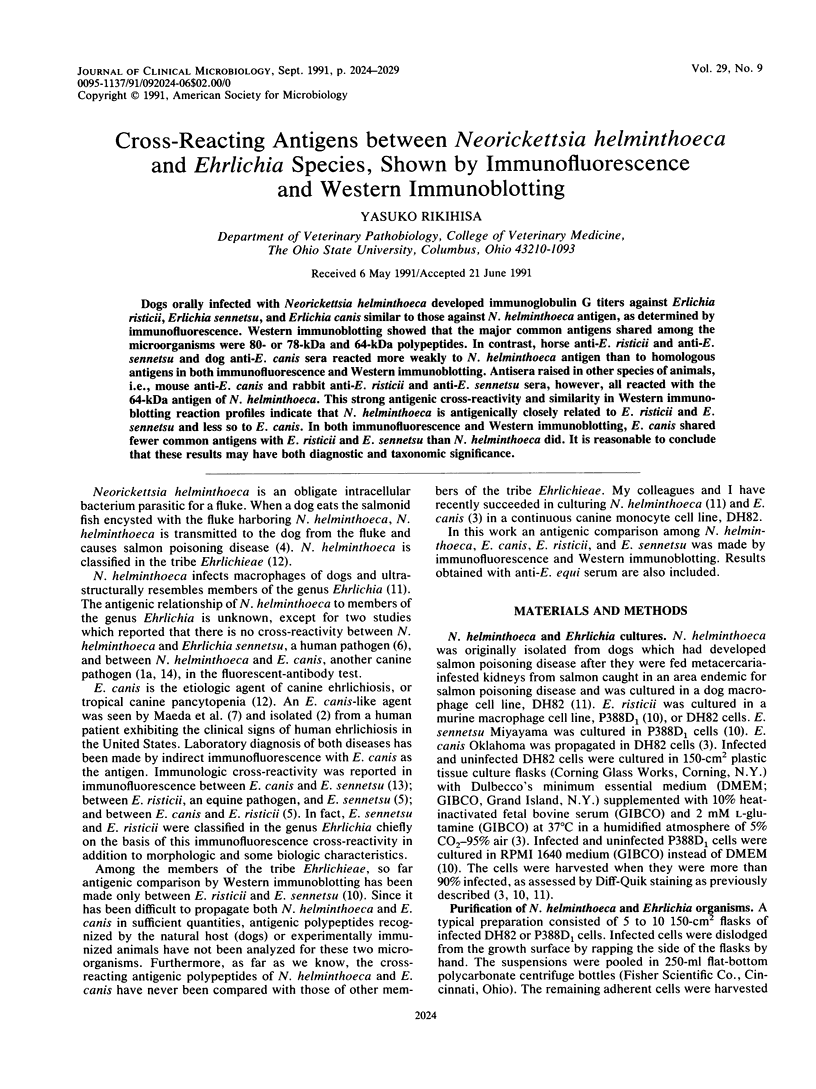
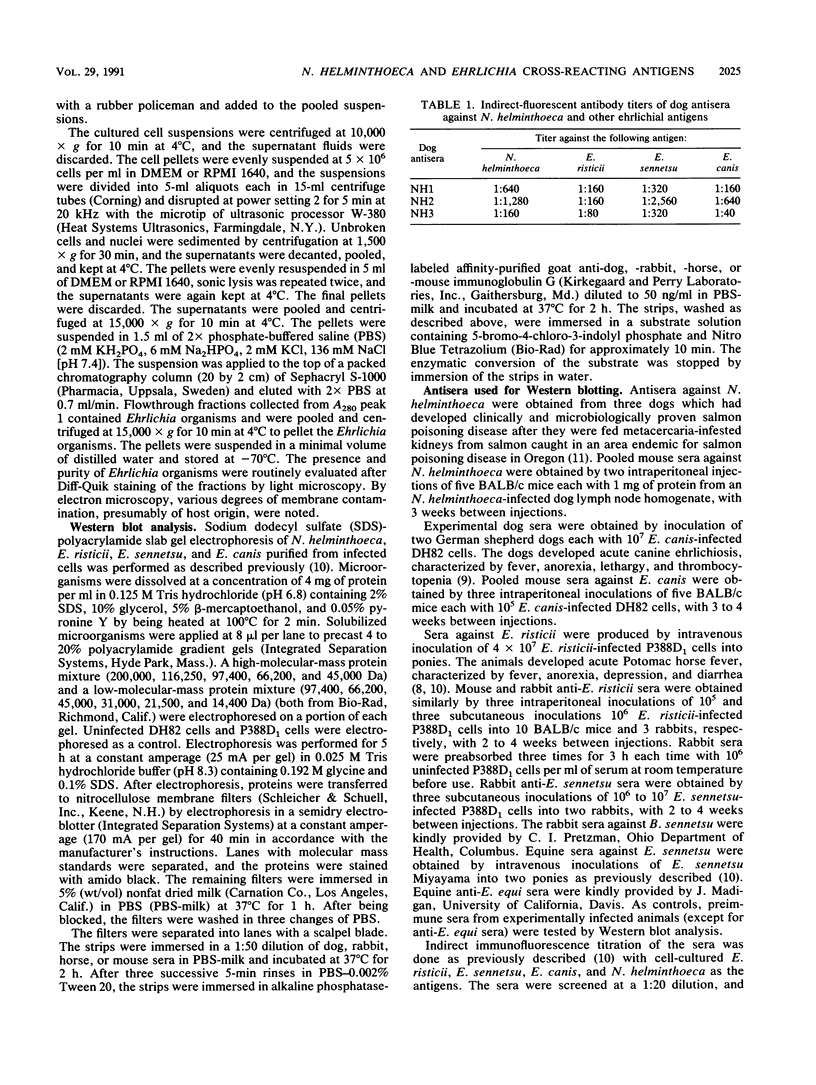
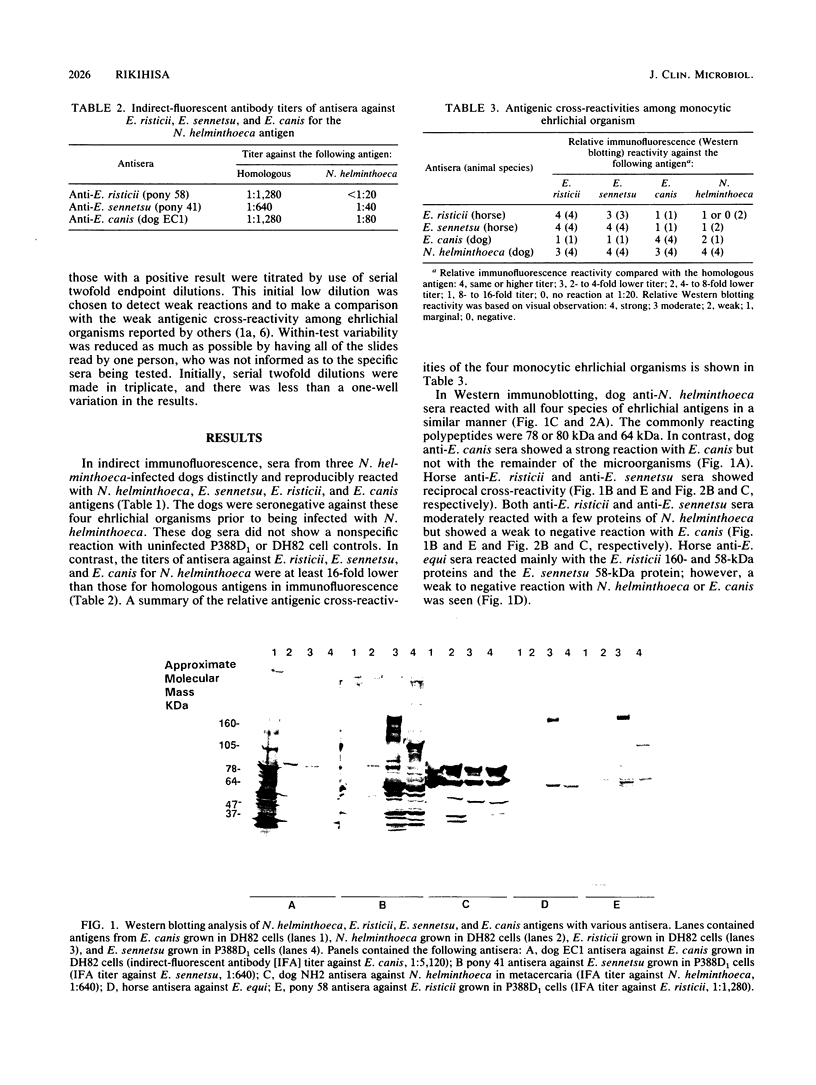
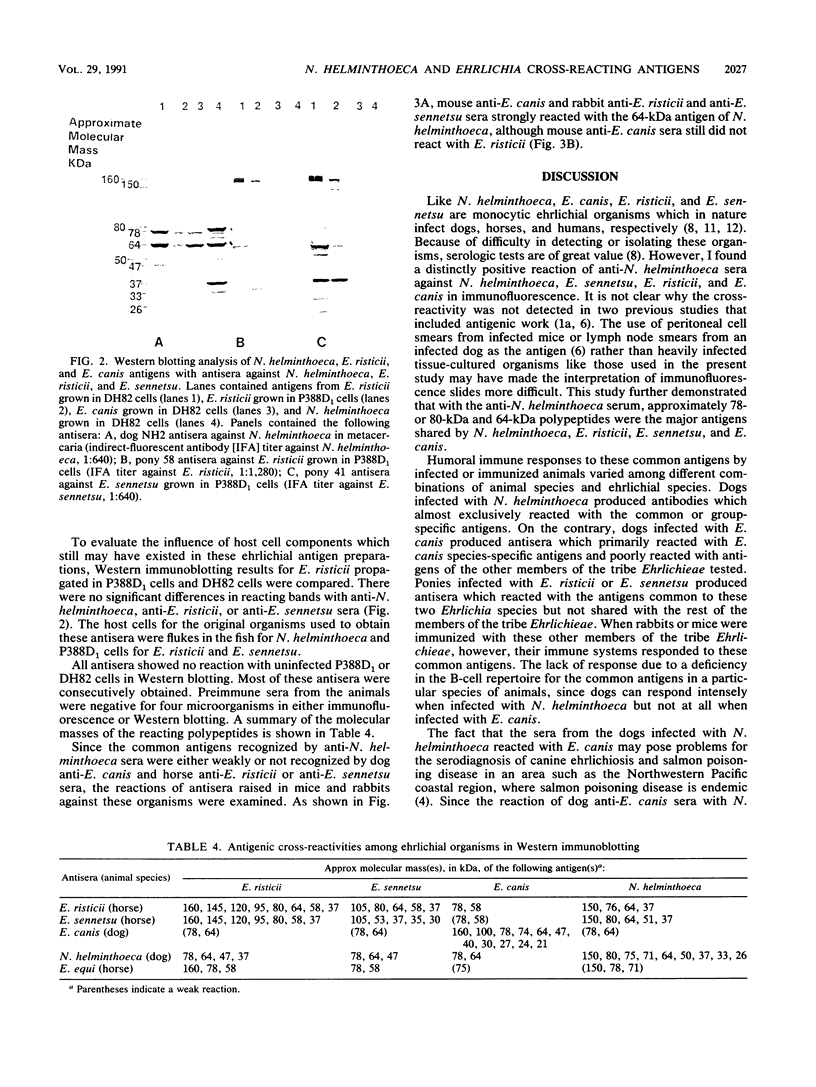
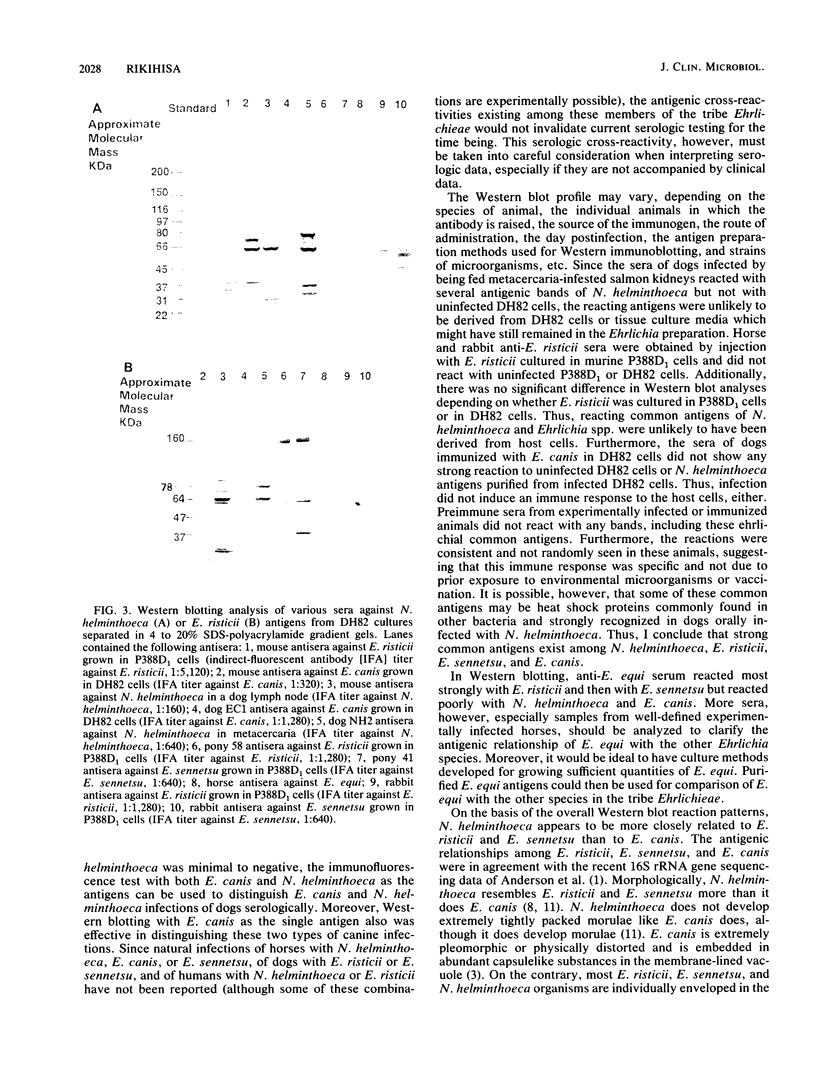
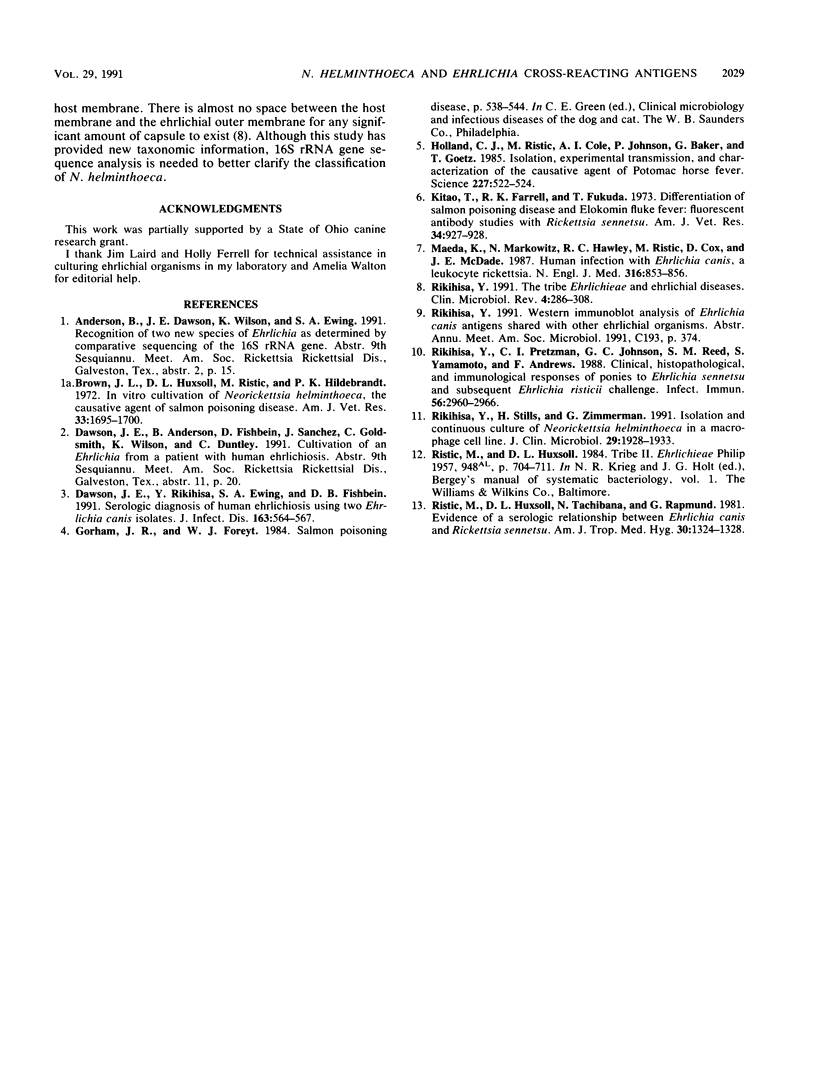
Images in this article
Selected References
These references are in PubMed. This may not be the complete list of references from this article.
- Brown J. L., Huxsoll D. L., Ristic M., Hildebrandt P. K. In vitro cultivation of Neorickettsia helminthoeca, the causative agent of salmon poisoning disease. Am J Vet Res. 1972 Aug;33(8):1695–1700. [PubMed] [Google Scholar]
- Dawson J. E., Rikihisa Y., Ewing S. A., Fishbein D. B. Serologic diagnosis of human ehrlichiosis using two Ehrlichia canis isolates. J Infect Dis. 1991 Mar;163(3):564–567. doi: 10.1093/infdis/163.3.564. [DOI] [PubMed] [Google Scholar]
- Holland C. J., Ristic M., Cole A. I., Johnson P., Baker G., Goetz T. Isolation, experimental transmission, and characterization of causative agent of Potomac horse fever. Science. 1985 Feb 1;227(4686):522–524. doi: 10.1126/science.3880925. [DOI] [PubMed] [Google Scholar]
- Kitao T., Farrell R. K., Fukuda T. Differentiation of salmon poisoning disease and Elokomin fluke fever: fluorescent antibody studies with Rickettsia sennetsu? Am J Vet Res. 1973 Jul;34(7):927–928. [PubMed] [Google Scholar]
- Maeda K., Markowitz N., Hawley R. C., Ristic M., Cox D., McDade J. E. Human infection with Ehrlichia canis, a leukocytic rickettsia. N Engl J Med. 1987 Apr 2;316(14):853–856. doi: 10.1056/NEJM198704023161406. [DOI] [PubMed] [Google Scholar]
- Rikihisa Y., Pretzman C. I., Johnson G. C., Reed S. M., Yamamoto S., Andrews F. Clinical, histopathological, and immunological responses of ponies to Ehrlichia sennetsu and subsequent Ehrlichia risticii challenge. Infect Immun. 1988 Nov;56(11):2960–2966. doi: 10.1128/iai.56.11.2960-2966.1988. [DOI] [PMC free article] [PubMed] [Google Scholar]
- Rikihisa Y., Stills H., Zimmerman G. Isolation and continuous culture of Neorickettsia helminthoeca in a macrophage cell line. J Clin Microbiol. 1991 Sep;29(9):1928–1933. doi: 10.1128/jcm.29.9.1928-1933.1991. [DOI] [PMC free article] [PubMed] [Google Scholar]
- Rikihisa Y. The tribe Ehrlichieae and ehrlichial diseases. Clin Microbiol Rev. 1991 Jul;4(3):286–308. doi: 10.1128/cmr.4.3.286. [DOI] [PMC free article] [PubMed] [Google Scholar]
- Ristic M., Huxsoll D. L., Tachibana N., Rapmund G. Evidence of a serologic relationship between Ehrlichia canis and Rickettsia sennetsu. Am J Trop Med Hyg. 1981 Nov;30(6):1324–1328. doi: 10.4269/ajtmh.1981.30.1324. [DOI] [PubMed] [Google Scholar]





